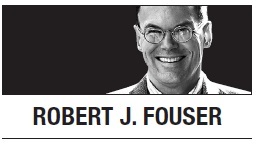
With less than a month to go, the presidential campaign in Korea is heating up fast. After the impeachment of Park Geun-hye, the parties focused on choosing candidates and media attention focused on the former president’s arrest. By the first week of April, all five parties represented in the National Assembly had chosen their candidates, and the media turned its attention to the presidential race. Where does the race stand now and how will it unfold?
Because of the impeachment, this is an unusual race. The major candidates began their quest for the presidency last year with the understanding that the election would be in December this year, not May. Impeachment raised the possibility of an early election, but they had to wait for the Constitutional Court’s decision before moving forward. Party nominations are usually decided several months in advance, giving the nominees time to consolidate party support. The short notice this year makes for a rushed campaign.
Impeachment has led to a political fever with collateral damage. Park not only lost the presidency and found herself in jail, she also caused a split in the once-powerful Saenuri Party, which has since changed its name to the Liberty Korea Party. Thirty-three members of the party with National Assembly seats left the party and formed the Bareun Party, which reduced the Liberty Party Korea’s representation to 93 seats.
Party splits, name changes, and the rise of candidate-centered parties are common in Korea, but the center-right has held together well over the last three elections (2002, 2007 and 2012). The last major conservative split was in 1997, and helped Kim Dae-jung win. The collapse of the economy at the end of that year also greatly influenced the election.
The center-left, meanwhile, held together well from 1997 until 2016 when the People’s Party split from the Democratic Party of Korea before the general election. The Democratic Party became the largest party in the National Assembly following the Saenuri Party’s split, but the People’s Party now has 40 seats, making it the third-largest.
This election is the first since 1987 in which both the center-right and center-left have been split into two groups. That split lasted until Election Day, allowing Roh Tae-woo to win with 36.6 percent of the vote. With six major candidates running this year, watch to see if the splits hold or if weaker parties lose support, causing their candidates to withdraw. Last minute dropouts and endorsements are common in presidential elections in Korea, and a surprise is more likely than not.
Opinion polls show a very tight race, which magnifies the potential impact of weaker parties. A recent poll in the Hankyoreh daily showed Moon Jae-in of the Democratic Party and Ahn Cheol-soo of the People’s Party tied at 37.7 percent in a six-way race. Center-right Hong Jun-pyo of the Liberty Party of Korea and Yoo Seong-min of the Bareun Party had 6.6 percent and 2.1 percent, respectively. Left-leaning Sim Sang-jung of the Justice Party had 2 percent and independent Kim Chong-in had 0.4 percent. This is the first presidential election without a strong center-right contender, which makes for an unusual situation.
The order of the last four candidates has remained the same and none of them has a chance of winning, leaving Moon and Ahn the only viable contenders. Moon entered the race with a strong lead, but Ahn has caught up rapidly over the past several weeks. Several recent polls show him moving into a slight lead over Moon in a six-way race. Analysts have argued that Ahn is attracting support from older center and center-right voters who want to prevent Moon from winning.
The easiest way to gain the advantage is to convince a weaker candidate to drop out of the race and offer an endorsement. The combined support of two center-right candidates is now 8.7 percent, and polls show that Ahn would be the beneficiary if one or both dropped out. Likewise, Moon would benefit if left-leaning Sim Sang-jung dropped out.
This election is also upending long-standing regional patterns in voting. In every presidential election since 1987, North Jeolla Province and South Jeolla Province have gone overwhelmingly for center-left candidates, but they shifted away toward the People’s Party in the 2016 general election, and Ahn is doing well there now. North Gyeongsang Province and South Gyeongsang Province have long favored center-right candidates, but Moon has strong support in his home base of Busan.
The race is very much in flux because the impeachment upended patterns that had developed since democratization in 1987. At present, a large field favors Moon, whereas a smaller field favors Ahn. Debate performances, shifts in regional support and a black swan event, however, could give either man a decisive advantage regardless of the size of the field.
By Robert J. Fouser
Robert J. Fouser, a former associate professor of Korean language education at Seoul National University, writes on Korea from Pawtucket, Rhode Island. He can be reached at robertjfouser@gmail.com. -- Ed.








